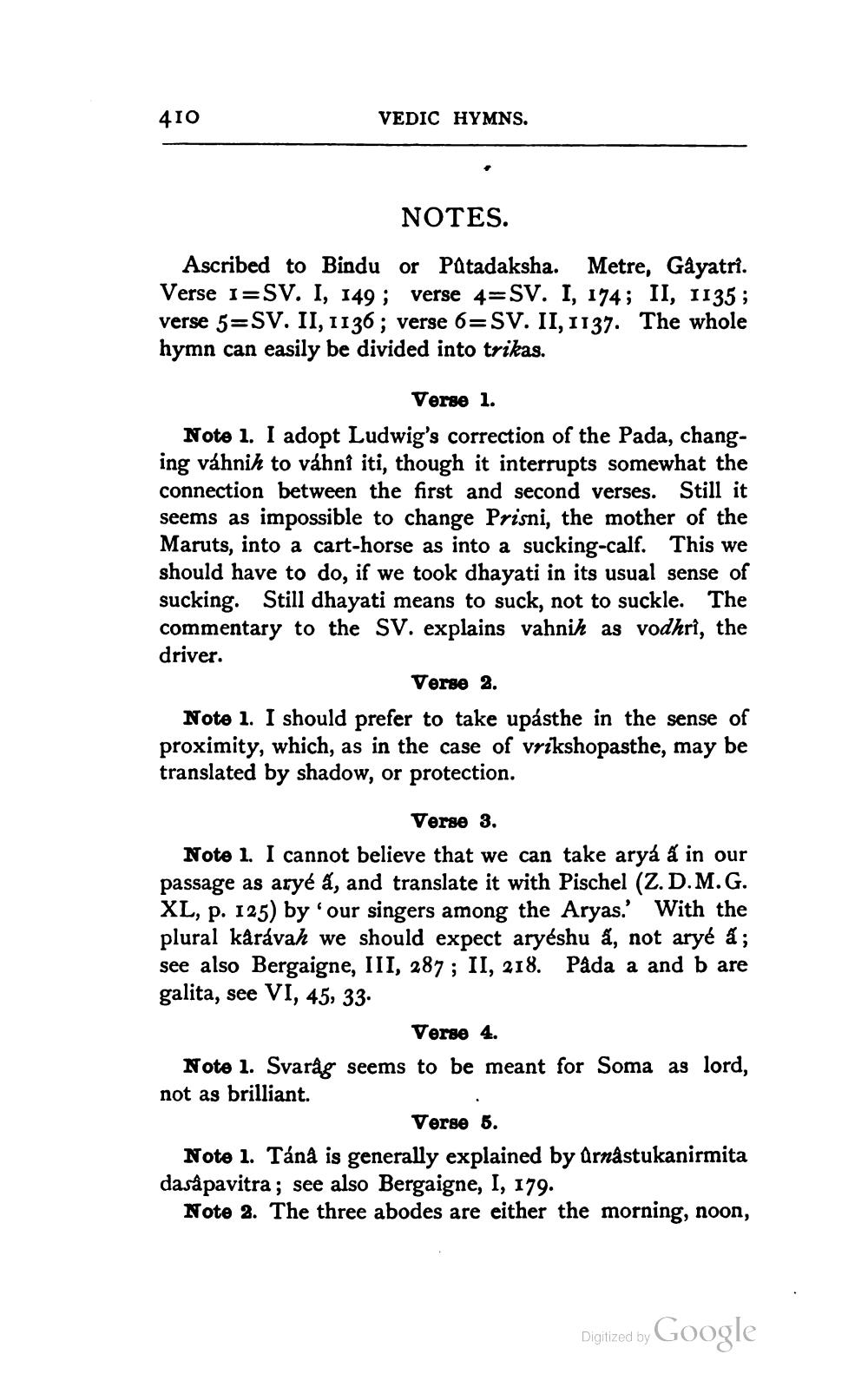________________
410
VEDIC HYMNS.
NOTES.
Ascribed to Bindu or Patadaksha. Metre, Gayatri. Verse 1=SV. I, 149 ; verse 4=SV. I, 174; II, 1135; verse 5=SV. II, 1136; verse 6=SV. II, 1137. The whole hymn can easily be divided into trikas.
Verse 1. Note 1. I adopt Ludwig's correction of the Pada, changing vahnih to váhni iti, though it interrupts somewhat the connection between the first and second verses. Still it seems as impossible to change Prisni, the mother of the Maruts, into a cart-horse as into a sucking-calf. This we should have to do, if we took dhayati in its usual sense of sucking. Still dhayati means to suck, not to suckle. The commentary to the SV. explains vahnih as vodhri, the driver.
Verse 2. Note 1. I should prefer to take upásthe in the sense of proximity, which, as in the case of vrikshopasthe, may be translated by shadow, or protection.
Verse 3. Note 1. I cannot believe that we can take arya å in our passage as aryé a, and translate it with Pischel (Z.D.M.G. XL, p. 125) by our singers among the Aryas.' With the plural kårávah we should expect aryéshu â, not aryé a; see also Bergaigne, III, 287 ; II, 218. Pada a and b are galita, see VI, 45, 33.
Verse 4. Note 1. Svaràg seems to be meant for Soma as lord, not as brilliant.
Verse 5. Note 1. Tána is generally explained by Arnastukanirmita dasåpavitra ; see also Bergaigne, I, 179.
Note 2. The three abodes are either the morning, noon,
Digitized by
Digized by Google




